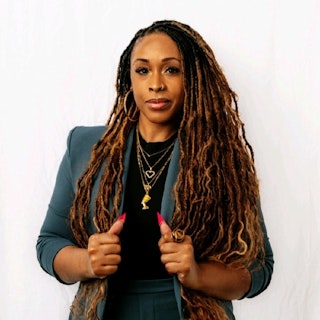Brands aren’t ready for increased demand from trans and gender-fluid communities
As more people open up about their gender expression, Danisha Lomax of Digitas says it’s important that brands pay attention.

Though it’s now a major milestone in the marketing calendar, Pride month is always an opportunity for marketers and communities to take a step back and reflect, because solutions go beyond temporary, surface-level schemes. We must consider how to integrate gender fluidity into normalized, everyday conversations between brands and people.
That said, it is important to remember that identification is individual, autonomous and, most importantly, should be self-affirming so how do we ensure our marketing efforts are expansive, inclusive and center this community?
Advertisement
As more people accept and are open with their gender expression, interest in gender-neutral information and products continues to rise. Recent research shows a notable increase in Gen Z and Gen Alpha identifying as trans, while Google reports a 217% increase in searches related to gender-neutral topics and a 95% increase in non-binary gender-related searches in the last ten years alone. A McKinsey study also found that 48% of Gen Z consumers and 38% of consumers from other generations appreciate brands that do not categorize products by gender.
For example, the travel industry has seen a rapid rise in a positive perception of travel companies (airlines, hotels, tour operators) that support trans rights. According to the 24th annual LGBTQ+ tourism and hospitality survey, 89% of LGBTQ+ travelers stated their strong preference for those brands and 82% of survey participants feel more optimistic about a hotel or restaurant upon seeing an all-gender restroom sign.
While these are important points of progress, we cannot ignore that self-identification can minimize safety and personal preferences. While gender, on the surface, allows for conventional segmentation, it’s crucial to acknowledge that some individuals may have reservations about self-identifying due to real safety concerns. Gender distinction can also lead to gender stereotypes in marketing distracting brands from creating genuine, immersive brand experiences and centering those who have been historically left out.
Advertisement
To ensure your brand is at the forefront of inclusion, it’s important to prioritize advocacy and partnerships. Establish evidence-driven trust by showing your consumers how the brand promotes equality and safety for all. Explore industry-specific inclusivity accreditation options to demonstrate how your brand participates in the change. For example, the International LGBTQ+ Travel Association offers rigorous evaluation processes, assessing companies in the travel industry to ensure they offer trans and non-binary affirming training and meet comprehensive inclusivity criteria.
Consider partnering with trans-led, community-based partners, like Refuge. This project promotes and provides a directory of safe restroom options that can be identified based on proximity to a specific location. Brands can ensure safe and secure restroom access by promoting this information for their physical location sites through Refuge directory listings online.
Brands should also consider media and marketing in their proactive inclusion efforts. Make your customers feel safe from the beginning of their research and consideration process by anticipating their needs and answering their questions upfront. Sites such as Destination Pride and the International Lesbian, Gay, Bisexual, Trans and Intersex Association offer resources on worldwide LGBTQ+ laws, rights, protections and social sentiment. For brands in the service industries, consider embedding online guides and directories across your site’s product pages.
Suggested newsletters for you
Although there are no data exchanges that prioritize LGBTQ+ identifiers, businesses can still use gender-expansive messaging to target audiences interested in specific topics, ultimately fostering trust and support. Based on engagement, you can leverage first-party data to add personalization across the paid, owned and earned ecosystem and even have the ability to use appropriate pronouns in messaging.
We know that consumer search demand for LGBTQ+ travel-related information increased by 82% in 2023. With partners like Revry, explore media and content partnerships to bring these insights to life in a way created by and for the trans community.
Creating trans and gender-fluid-inclusive products and on-site solutions is important because people are becoming more comfortable with expressing and identifying themselves however they want, whenever they want. The people are in control and marketers who prioritize inclusivity throughout the entire user experience will have the hearts and wallets as a competitive advantage, all because they make even the most historically excluded consumer feel valued, seen and welcomed.
Danisha Lomax is executive vice-president, head of client inclusivity and impact at Digitas

